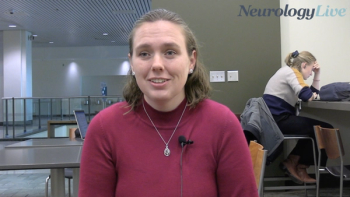
Robert Fox, MD: Neurofilament Light and the SPRINT MS Trial
The staff neurologist at Cleveland Clinic shared his insight from the study, as well as what these data can do to further inform the use of this biomarker in progressive MS trials.
“We did find that those patients that had either a clinical relapse, MRI lesion, or a neurologic serious AE were more likely to have higher levels of neurofilament, which added noise into the background.”
For quite some time, multiple sclerosis (MS) neurologists and researchers have sought a biomarker to utilize in phase 2 trials of progressive MS to show whether or not a particular therapy can prevent or slow neurologic injury. Specifically, this search has looked into fluid biomarkers, as they are easier to obtain and reproduce upon sampling.
The frontrunner in recent years has been neurofilament light (Nfl). In a recent phase 2 trial of ibudilast, a small molecule normally used in the treatment of asthma and post-stroke vertigo in Asia, a powerful effect on slowing brain atrophy in progressive MS was observed. Robert J. Fox, MD, staff neurologist, Cleveland Clinic, and lead author on the study, and his colleagues wanted to see if this reduction observed in brain atrophy would be mirrored by a reduction in serum Nfl levels in ibudilast-treated patients.
In a conversation at the 2019 American Academy of Neurology (AAN) Annual Meeting in Philadelphia, Pennsylvania, Fox spoke with NeurologyLive® to share his insight from the study, as well as what the findings were and what these data can do to further inform the use of this biomarker in progressive MS trials.
For more coverage of AAN 2019,
REFERENCE
Fox RJ, Matthew Karafa M, Konig V, et al. Effect of Ibudilast on Neurofilament-light Chain in Progressive MS: Analysis from a Phase II Trial. Presented at: 2019 American Academy of Neurology Annual Meeting. May 4-10, 2019; Philadelphia, PA.
Newsletter
Keep your finger on the pulse of neurology—subscribe to NeurologyLive for expert interviews, new data, and breakthrough treatment updates.




















